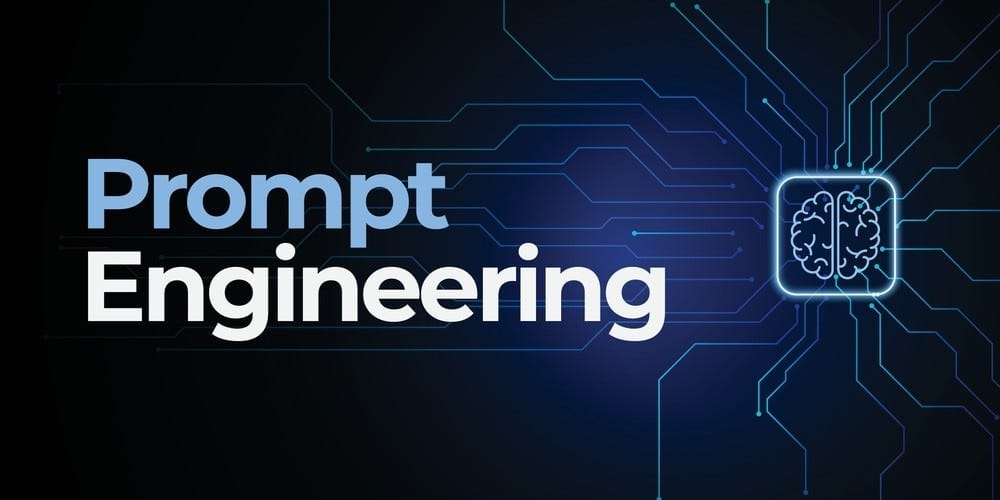Prompt Engineering 2025: The Key to Unlocking Real AI Value

Prompt engineering has become the secret weapon behind the world’s most successful AI applications. Whether you're fine-tuning a chatbot, building internal tooling, or creating automations with tools like GPT-4 or GPT-5 the prompt is the new source code.
In this in-depth guide, we’ll cover:
- What prompt engineering is (and why it matters)
- Types of prompts and how they influence outputs
- Real-world business use cases
- Examples and best practices
- The future of prompt design with AI agents
What Is Prompt Engineering?
Prompt engineering is the process of crafting input instructions — called prompts — to elicit the most accurate, relevant, or creative response from a large language model (LLM) like OpenAI’s GPT-5.
Think of a prompt like a command to an extremely smart intern who knows everything on the internet — but only gives you what you ask for in just the right way.
Prompt engineering isn’t just typing questions into ChatGPT. It involves:
- Using context to steer the model
- Providing examples (few-shot learning)
- Formatting input/output consistently
- Controlling tone, persona, and format
- Iterating systematically for precision
Why Prompt Engineering Matters in 2025
With GPT-5’s multimodal abilities, longer memory windows, and integration capabilities, prompts now drive:
- Business workflows
- Customer support bots
- Internal automations
- Market research
- Software development
Without well-structured prompts, even the most powerful LLM delivers generic or wrong answers.
Companies that invest in prompt engineering gain a major competitive advantage — faster execution, better AI ROI, and stronger customer experience.
Types of Prompts
1. Zero-shot Prompts
No context or examples. You ask the model to perform a task directly.
Example:
“Summarize this article in 3 bullet points.”
2. Few-shot Prompts
You provide a few examples to show the model what kind of response you expect.
Example:
3. Chain-of-Thought Prompts
You ask the model to reason step-by-step before answering.
Example:
“Solve the following math problem step by step…”
4. Role-Based Prompts
You assign the model a persona or role.
Example:
“You are an experienced HR consultant. Write an onboarding checklist for remote workers.”
Business Applications of Prompt Engineering
Prompt engineering isn't limited to AI hobbyists. It’s used daily in high-stakes business scenarios:
Sales and Lead Qualification
AI agents use prompts to:
- Determine if a lead is qualified
- Ask clarifying questions
- Route conversations to human reps
Example: AI Sales Agents →
Data Analysis
Generate reports and insights from raw data.
Prompt:
“Based on the data below, summarize the 3 biggest cost drivers and suggest optimizations.”
Legal & Compliance
Use AI to flag issues in contracts or policies.
Prompt:
“Review this contract for common GDPR compliance risks. Output any found in a bullet list.”
Content Generation
AI generates blog posts, ads, documentation — all from engineered prompts.
Prompt:
“Write a technical blog post on Vue 3 SSR optimizations for SEO. Use a confident, professional tone. Include headings.”
Prompt Engineering for AI Agents
AI agents don’t just reply once — they use multi-step logic, memory, and dynamic actions.
Prompt Engineering for Agents:
- Break down tasks: “First do X, then check Y, then output Z.”
- Use memory variables: “Remember user preferences for future interactions.”
- Handle errors: “If you get a null value, ask the user again.”
This structure is what makes agents like Scalevise’s AI automations so powerful.
Best Practices for Prompt Engineering
Be Explicit
The more specific you are, the better the result. Vague prompts lead to vague answers.
Bad:
“Write something about onboarding.”
Better:
“Write a 500-word article for HR professionals about automating employee onboarding using AI tools.”
Test and Iterate
Prompting is an iterative process. Change one variable at a time and note the effect.
Use System Prompts
In tools like OpenAI's API, use a system message to define model behavior globally.
Example:
“You are a technical SEO expert. Only answer questions related to website performance.”
Use Anchors and Examples
Give the model “anchor” phrases, formatting, or examples that mimic the output you want.
Prompt Engineering with GPT-5
With GPT-5’s increased context window (up to 1M tokens) and better reasoning, prompt engineering now supports:
- Document-wide analysis
- End-to-end task execution
- Context switching across conversations
- API tool use from within prompts
Expect semantic memory and multi-agent coordination to be central in 2025.
Case Studies: Prompt Engineering in Action
1. Automated Content System
A startup used Make.com and GPT-4 to generate SEO content automatically. With prompt engineering, they scaled to 1M monthly impressions.
2. AI Customer Agent for Support
A SaaS firm implemented an AI agent to reply to common customer queries, using chained prompts and memory.
→ Reduced support costs by 42%.
Future of Prompt Engineering
The future is heading toward:
- Prompt Libraries – reusable prompt modules for business functions.
- PromptOps – prompt versioning and A/B testing in production.
- Autonomous Prompting – agents rewriting their own prompts to self-optimize.
And with tools like Amazon Kiro and AI Dev Agents, prompt engineering becomes part of the dev toolchain — not just marketing.
Final Thoughts
Prompt engineering is more than just a skill — it’s becoming a core business function. With GPT-5, AI agents, and deeper context models, the value you get from AI is directly tied to how well you communicate with it.
Want to scale your AI capabilities?
At Scalevise, we build AI agent systems, automation flows, and prompt stacks tailored to your business.
→ Run our AI Scan and discover missed opportunities in your workflows.
